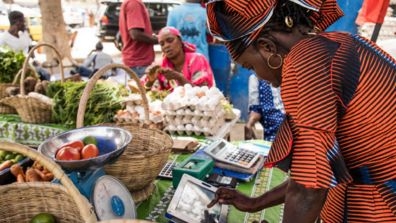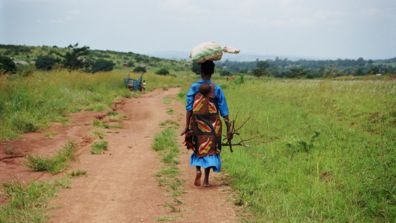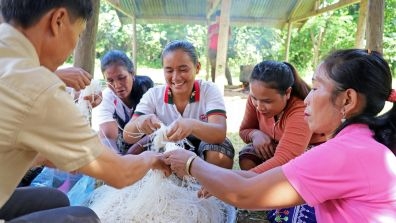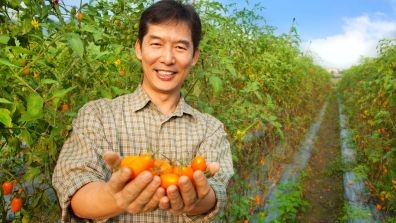The remarks were originally published on the U.S. Department of the Treasury website.
Hello everyone. And thank you to Administrator Power and her team. The Administrator has been a leading voice on food security on behalf of our Administration, including through Feed the Future. I’m glad to be able to join her, President Ruto, and President Adesina today.
Over the past three years, the successive shocks of COVID-19, Russia’s war on Ukraine, and extreme climate events have had a devastating impact on food security. Around one-tenth of the global population currently faces severe food insecurity. The Food and Agriculture Organization projects there will be about 120 million more chronically undernourished people in 2030 due to the pandemic and war. In coming years, we will face the mounting effects of climate change, new sources of conflict and fragility, and more threats to global health. Each successive shock will exacerbate the underlying drivers of food insecurity. And each will hit harder those who are already food insecure. I know that President Ruto and many other African leaders spoke powerfully about the nexus between climate change, agricultural productivity, and food security at the Africa Climate Summit earlier this month.
The impacts of food insecurity on individuals and communities are acute. Hunger and poor nutrition undermine health and educational outcomes and well-being. Food insecurity also has economy-wide impacts, contributing to lower productivity that holds back economic growth. This means food security matters both morally, and for the global economy.
The U.S. has provided nearly $13.5 billion in humanitarian and development assistance since Russia’s invasion of Ukraine to address the global food security crisis. We have also helped lead multilateral action. The Black Sea Grain Initiative enabled Ukraine to continue exporting grain to low-income food-insecure economies. Russia’s withdrawal from the Initiative is devastating for countries such as Afghanistan, Ethiopia, Lebanon, and Yemen, which relied on these shipments, as well as for grain importers anywhere exposed to the price volatility caused by Russia’s actions. Going forward, we will maintain our strong support for Ukraine, call for Russia to reverse course, and mobilize our partners to take further action.
But we must also collectively do more than respond in moments of crisis. We must build resilience to them. This will reduce the need for future humanitarian assistance. And it will support sustainable economic growth. In my remarks today, I’ll focus on the need to accelerate investments in food and agriculture systems, particularly by the private sector. I’ll emphasize the importance of equipping international financial institutions to deploy additional financing for these investments. And I’ll address our longer-term work to evolve the multilateral development banks.
I. INVESTMENTS BY THE PRIVATE SECTOR AND INTERNATIONAL FINANCIAL INSTITUTIONS
Today, fiscal constraints limit too many governments’ abilities to make investments that fuel sustainable growth. The private sector can step in to fill this gap. We need private sector investments in technological innovations and to facilitate market access, for players across local, national, and regional food and agriculture value chains, including smallholder farmers, producers, distributors, and retailers. Investments in small and medium-sized enterprises, which play a crucial role in these value chains, are particularly key. Of course, governments need to provide favorable policy environments: ones that are predictable, transparent, and incentivize the right kinds of investment. And the Biden Administration is supporting this approach through the U.S.-Africa strategic partnership on food security, which focuses on promoting opportunities for transformative government and private sector investments.
Increased investment also depends on leveraging the international financial institutions. We have seen significant progress since international financial institutions came together to launch the IFI Action Plan to Address Food Insecurity in May 2022. Food security and agriculture-related lending across these institutions increased to almost $15 billion in 2022. That’s an over 60 percent increase from an annual pre-war average of just over $9 billion. As of June, the World Bank achieved $22 billion in new lending commitments, well-surpassing its $12 billion Action Plan target. And the International Monetary Fund has disbursed $1.8 billion through its Food Shock Window. Going forward, the IFIs will continue to play a vital role in strengthening food security through policy advice and supporting countries’ investments in sustainable and resilient food systems. We should institutionalize the coordination and coherence the Action Plan provided. And we are currently working with the IFIs to do just that.
There are also existing specialized multilateral tools we should leverage. We are proud to be the largest donor to the Global Agriculture and Food Security Program, which provides much-needed grants, concessional loans, and blended finance – as well as technical assistance – to low-income countries and producer organizations. And we are currently working alongside other donors to enhance the Program’s ability to mobilize and deploy private capital, which will allow it to work more effectively with facilities like the one being launched today. The International Fund for Agricultural Development, focused on alleviating rural poverty in the face of a changing climate, is also critical. The Fund has increased rural incomes, expanded productive capacities, and improved market access for millions of individuals, over half of whom are women. We are currently working with other Fund members toward a successful replenishment.
II. EVOLVING THE MULTILATERAL DEVELOPMENT BANKS
But even focusing on medium and long-term investments in agriculture in addition to crisis response is not sufficient. Pandemics lower income. Conflict disrupts supply chains. Climate change poses risks to entire agricultural systems. So, combatting food insecurity also depends on broader efforts to address these global challenges. And this requires evolving the multilateral development banks, which are a central pillar of our international economic system.
We have already made significant progress on reforms related to the World Bank’s mission and vision, incentives, operational model, and financing capacity. We estimate that the MDBs as a system could unlock $200 billion in new lending capacity over the next ten years through balance sheet measures that are either already being implemented or are under consideration. This additional financing can be directly deployed to advance priorities like food security. And President Biden has requested funding that would enable the Bank to provide $27 billion in new resources for projects that address climate change, fragility, and pandemics – some of the core drivers of food insecurity – and to support immediate crisis response in the poorest countries.
III. CONCLUSION
Today’s event is an opportunity not just to again highlight the importance of food security but to renew our commitment to a particular path forward. There will always be crises to which we should respond with timely and substantial assistance. But short-term responses, however effective, will never bring about a world without food insecurity. Short-term assistance can’t prevent the next drought. Or ward off the next pandemic. And these challenges will continue to drive food insecurity, threatening the lives, livelihoods, and well-being of those around the world. Supporting individuals and communities depends on thinking longer-term to put in place polices and make investments that build systems, not just storage silos. Systems that will allow people around the world to endure coming shocks without going hungry, and to live healthy and prosperous lives.
Type
NewsDate
Focus area
- Climate Change




